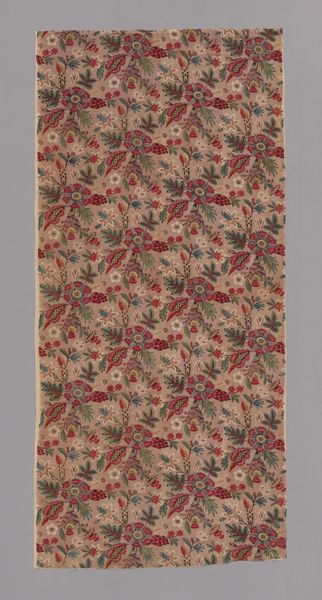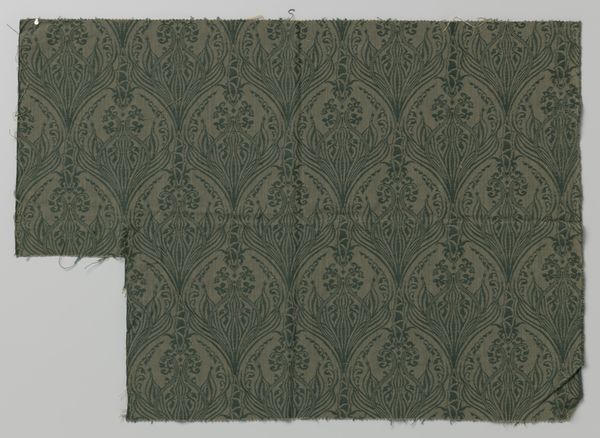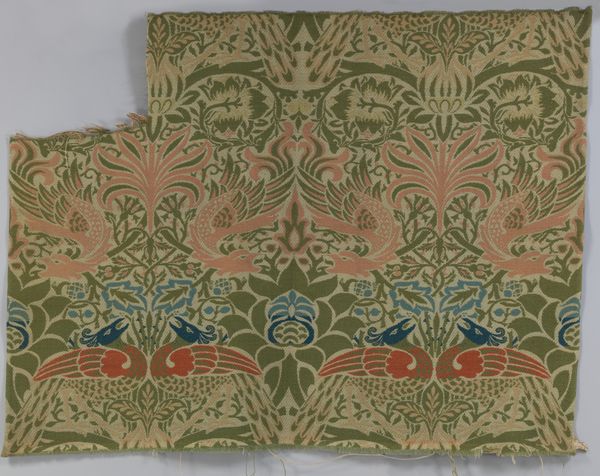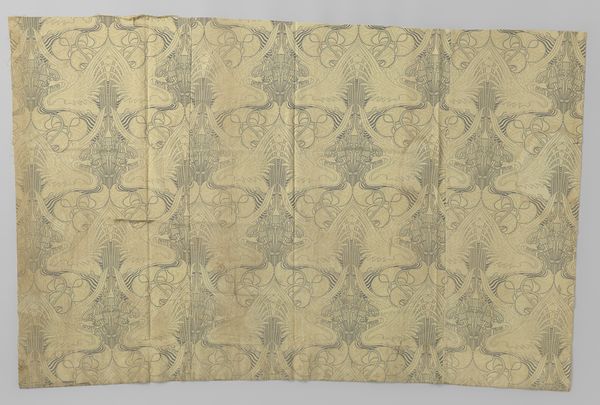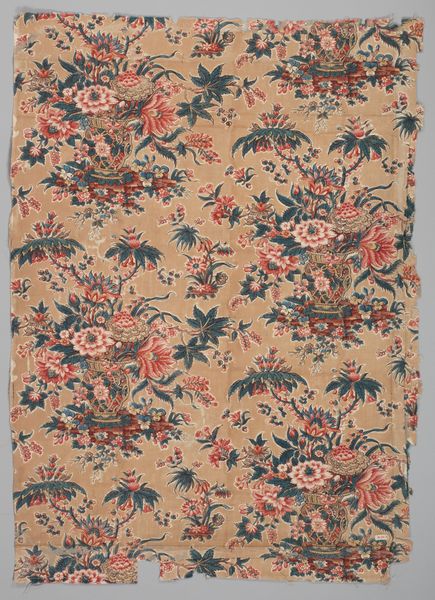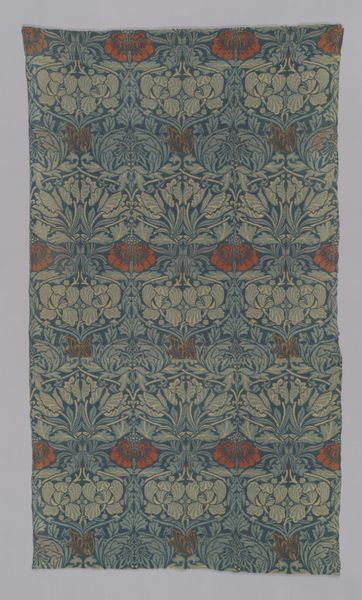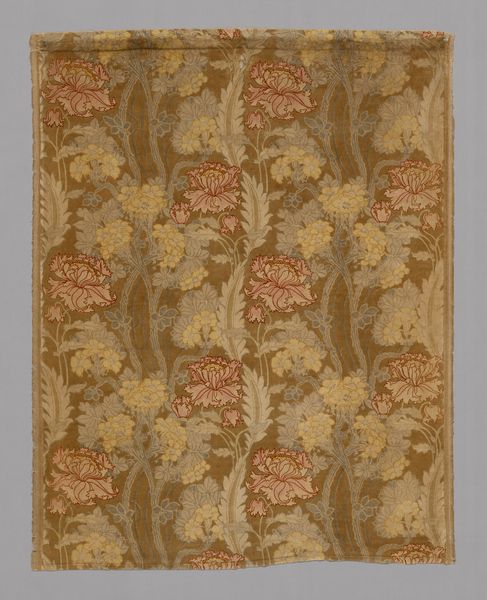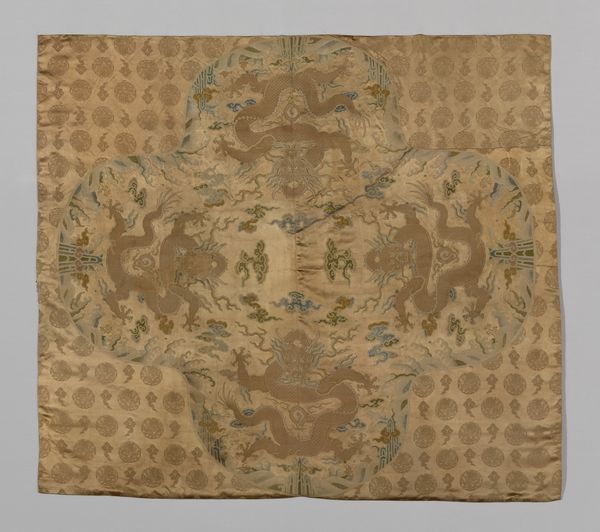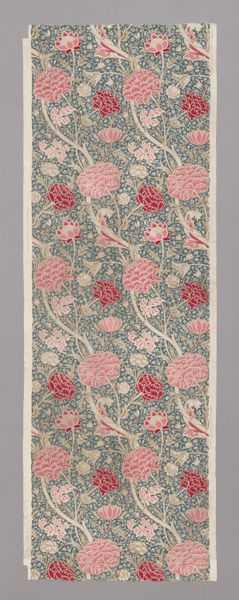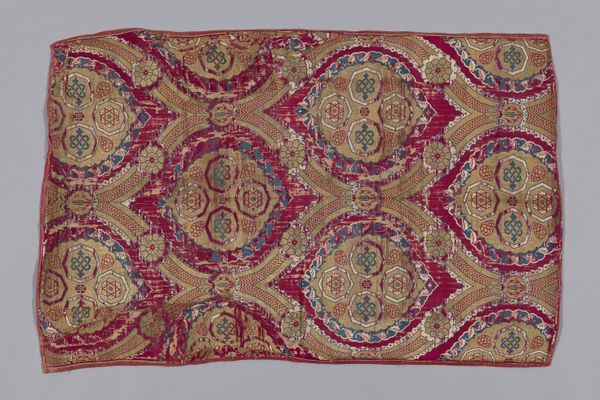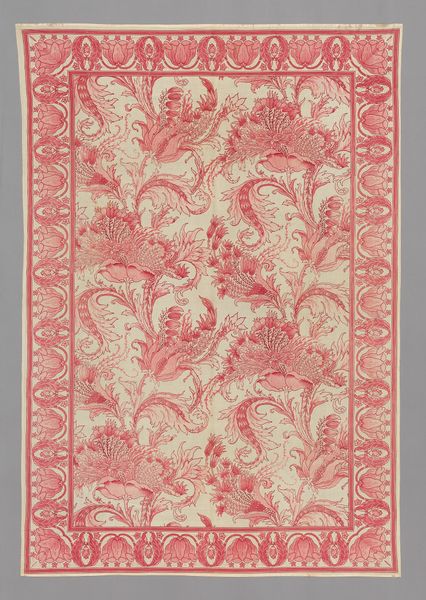
print, weaving, textile
# print
#
weaving
#
textile
Dimensions: 82.5 × 101.1 cm (32 1/2 × 39 3/4 in.) Repeat: 40.8 × 93.2 cm (16 1/8 × 36 5/8 in.)
Copyright: Public Domain
Curator: What a striking piece of fabric. We're looking at "The Flowering Cornucopia," or "La Corne Fleurie" as it's known in French, a textile printed sometime after 1789, probably by J.P. Meillier & Cie. Editor: My first impression is one of constrained exuberance. The repeated pattern feels so lively, yet the strict vertical stripes and the limited color palette give it a sense of order, even a slight formality. Curator: Yes, that tension between control and abandon is central to its appeal. Notice how the cornucopia motif—that horn overflowing with flowers—is stylized, almost architectural. The repeating floral arrangement provides a satisfying, structural harmony. It’s a beautiful example of design principles at work. Editor: Absolutely, and thinking about the social context, textiles like this were often used in domestic settings to project an image of wealth, taste, and refinement. The flowering cornucopia itself symbolizes abundance, prosperity... concepts carefully curated within the household. Curator: Indeed, we see it reflecting larger historical trends of its era— the rise of industrial manufacturing meeting a demand for classically influenced design amongst the aspiring merchant class. The texture and materiality give a nod to opulence while it remains commercially available. The piece beautifully embodies the design principles used within repeated forms. Editor: Exactly. You know, seeing those crimson ribbons woven within the red stripes along the edges— they make me wonder about the labor and craftsmanship involved. It wasn't only the design but the making, the lives of the weavers and printers behind this material opulence, often overlooked. I can see their work as the start to an era that soon after made exploitation and industrialization prominent in colonized countries. Curator: An important reminder to consider that material reality. Focusing again on the image's presentation, the rhythmic structure creates an aesthetically balanced image, one of pure, structured joy. Editor: Yes, a controlled, class-conscious joy, we might say. It invites us to unpack the layered meanings of design, luxury, and production, a vibrant historical tapestry woven into the threads of the fabric itself. Curator: An astute and insightful perspective. Editor: As is yours; now I’ll consider textiles beyond their face value.
Comments
No comments
Be the first to comment and join the conversation on the ultimate creative platform.
